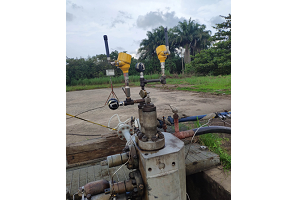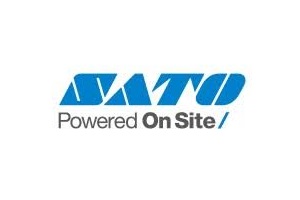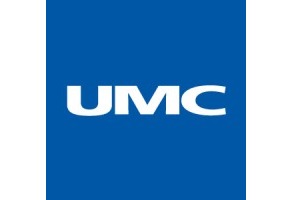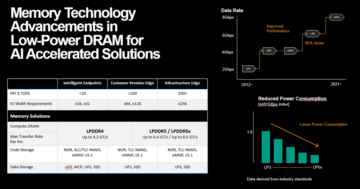
Kerlink, a provider in solutions dedicated to the Internet of Things (IoT), and SRETT, a provider of IoT-based systems that promote industrial operational efficiency, announced a remote-equipment monitoring system that allows a major international energy producer to significantly reduce its carbon footprint and improve its operation in Nigeria.
Built around Kerlink Wirnet iStation industrial-grade IoT gateways and SRETT’s Bumblebee sensors and data-management software for LoRaWAN networks, the automated monitoring system in a Nigerian gas field enables the company to eliminate weekly trips by employees to 25 oil and gas wells and reduce vehicle carbon emissions by 62,400 kg per year. In addition to eliminating employee travel, the system improves the production by minimising the days the wells are shut down.
For example, SRETT’s sensors enable remote monitoring of pressure and temperature data in gas-field equipment and can alert owners and operators of changes in status or potential hazardous situations in real-time. The ATEX-certified, wireless, plug-and-play and battery-powered devices are designed to collect critical data, which can then be transmitted long distances over a LoRaWAN network coupled with a cellular backhaul, to be used by applications running on computers or cell phones.
Wirnet iStation is a LoRaWAN gateway that specifically meets the standard requirements of public operators, MVNOs, cable operators, private businesses, public authorities and large and small companies. Deployed extensively around the world in smart-industry, smart-city and a wide range of other IoT projects, they combine reliable, robust, outdoor coverage and operational excellence, even in harsh environments. The gateways function with either long-lasting batteries or on solar power.
“SRETT and Kerlink’s remote deployment of sensors and gateways on this LoRa network feeds real-time pressure information to the energy producer’s headquarters,” says Philippe Gambier, SRETT VP. “This enables the customer to react immediately to problems at the site, while previously the company’s staff might not know production has stopped for days.”
“The Wirnet iStation grants high availability and performance levels that enable flexible and scalable deployments across many industries,” says Rafael Denis, Kerlink sales manager. “As this deployment with SRETT underscores, the customer began enjoying notable ROI within months of the installation. This is typical for Kerlink’s IoT deployments and enabled used cases.”
This large-scale implementation underscores how LoRaWAN infrastructure using SRETT sensors and Kerlink gateways is a technically viable and cost-efficient solution for many kind of use cases in Africa, in settings ranging from remote arid lands to forests.
Philippe Gambier, SRETT VP, says “Remote natural gas installation in Nigeria is monitored with a LoRaWAN network using equipment from SRETT and Kerlink. Temperature and pressure data are sent to the owner’s control room in near real-time, which eliminates the need for employees to travel to remote locations to check the equipment.”
Comment on this article below or via Twitter: @IoTNow_OR @jcIoTnow
- SEO Powered Content & PR Distribution. Get Amplified Today.
- Platoblockchain. Web3 Metaverse Intelligence. Knowledge Amplified. Access Here.
- Source: https://www.iot-now.com/2022/12/26/126440-kerlink-srett-install-lorawan-system-to-monitor-gas-field-in-nigeria/
- a
- across
- addition
- africa
- Alert
- allows
- and
- announced
- applications
- around
- article
- Authorities
- Automated
- availability
- batteries
- began
- below
- businesses
- cable
- carbon
- carbon emissions
- cases
- cell phones
- Changes
- check
- collect
- combine
- Companies
- company
- Company’s
- computers
- control
- coupled
- coverage
- critical
- customer
- data
- Days
- dedicated
- deployed
- deployment
- deployments
- designed
- Devices
- efficiency
- either
- eliminate
- eliminates
- eliminating
- Emissions
- Employee
- employees
- enable
- enables
- energy
- environments
- equipment
- Even
- example
- Excellence
- field
- flexible
- Footprint
- from
- function
- GAS
- gateway
- grants
- Headquarters
- High
- How
- HTTPS
- immediately
- implementation
- improve
- in
- industrial
- industries
- information
- Infrastructure
- install
- International
- Internet
- internet of things
- iot
- Kind
- Know
- lands
- large
- large-scale
- levels
- locations
- Long
- LoRaWAN
- major
- manager
- many
- Meets
- might
- Monitor
- monitored
- monitoring
- months
- Natural
- Natural Gas
- Near
- Need
- network
- networks
- Nigeria
- Nigerian
- notable
- Oil
- Oil and Gas
- operation
- operational
- operators
- Other
- owners
- performance
- Philippe
- phones
- plato
- Plato Data Intelligence
- PlatoData
- potential
- power
- pressure
- previously
- private
- problems
- producer
- Production
- projects
- promote
- provider
- public
- Rafael
- range
- ranging
- React
- real-time
- reduce
- reliable
- remote
- Requirements
- robust
- ROI
- Room
- running
- sales
- scalable
- sensors
- settings
- significantly
- site
- situations
- small
- Software
- solar
- Solar Power
- solution
- Solutions
- specifically
- Staff
- standard
- Status
- stopped
- system
- Systems
- The
- the world
- things
- to
- travel
- typical
- use
- vehicle
- via
- viable
- weekly
- Wells
- which
- while
- wide
- Wide range
- wireless
- within
- world
- year
- zephyrnet












